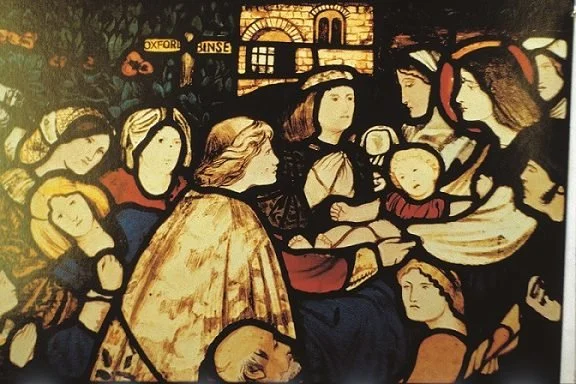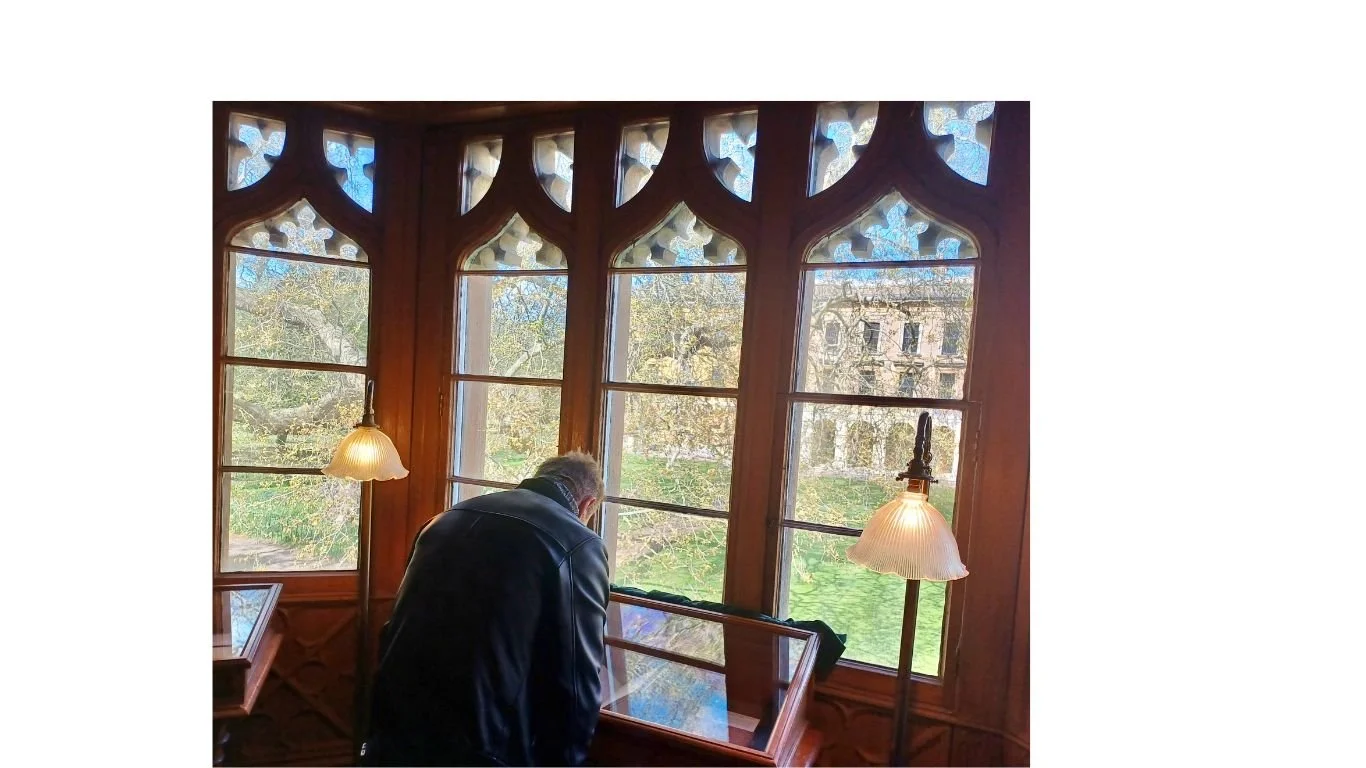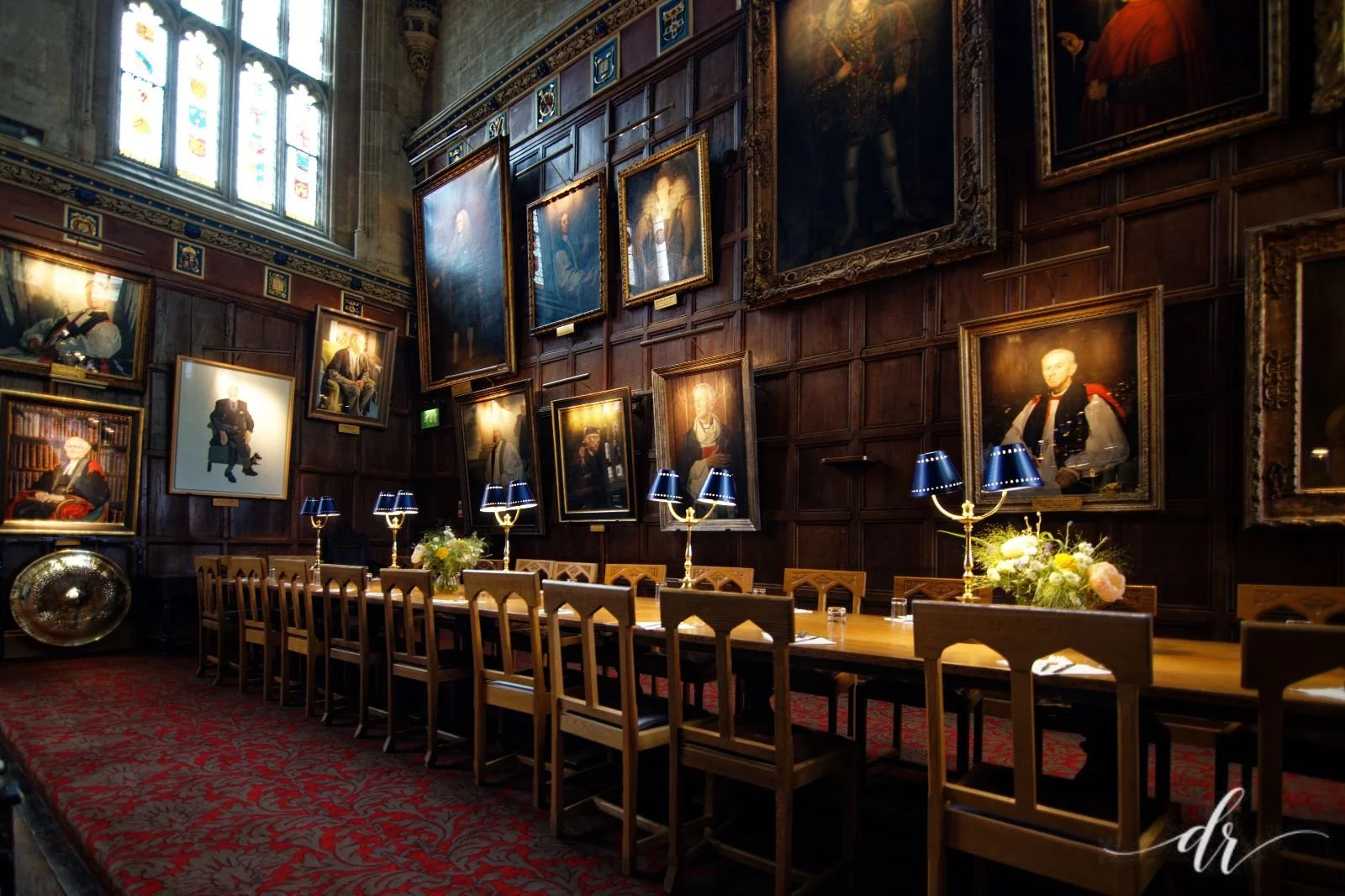Free to see…
There are few cities where you can see so much beauty without spending a penny, and Oxford is one of them. Simply walking here is an immersion in stone, sound, and story. By day, the golden buildings glow and by night, chapels and libraries glow softly from within, their stained glass and painted ceilings lit like lanterns against the dark.
Look up, and you’ll see the work of anonymous medieval artisans. Angels, gargoyles, and grotesques in the eaves and rooftops.
Sometimes college doors are opened to the public. In the afternoons, small groups are welcome to visit the chapels and quads of some.
During term time visitors are welcomed to certain choral evensong and other musical performances in college’s chapels. Look out for billboards along Broad Street, Catte Street, or at the college doors.
Oxford’s museums, too, are absolute gems and open for free to all.
In the Museum of Natural History a soaring, cathedral-like wonder of iron, glass, and stone, Wilberforce and Huxley once debated Darwin in what was Oxford’s first dedicated school of sciences.
Next door, the Pitt Rivers (nothing to do with pits or rivers!) holds the marvels of human invention and belief, packed into old cases that recall bygone centuries. A wonderland for children of all ages.
The Ashmolean feels like a more intimate, less crowded cousin of London’s British Museum, with a fine picture gallery on its top floor. Its treasures lean towards things Oxford: gifts from the city’s explorers, echoes of the English Civil War (when Charles I made Oxford his capital), and fascinating unusual works of art linked to the pre-Raphaelite circle.
On certain afternoons you can step into Keble College Chapel to see Holman Hunt’s Light of the World, glowing in its neo-Byzantine splendour. The Weston Library, meanwhile, offers exhibitions that spotlight Oxford’s manuscripts and great creatives.
To discover what’s happening day to day, check Daily Info, Oxford’s unofficial noticeboard. It lists everything from free exhibitions and college concerts to plays, lectures, and one-off events that might never be advertised elsewhere. Updated daily, it’s the city’s pulse which keeps Oxford’s plethora of academic and entertaining events from slipping past unseen.
And the streets themselves are a museum. The blue plaques scattered across the city recall thinkers, poets, and revolutionaries. The pubs remember them too: the Inklings, Tolkien, C. S. Lewis and their friends met to debate myth and meaning over beer.
To the north, on Woodstock Road the Catholic Oratory is where Tolkien worshipped. To the south, towards the site of Oxford’s old city gate, lies the calm of Christ Church Meadow, where Lewis Carroll’s imagination took flight. On the Meadow, the city’s trees reach a crescendo of majestic trees, echoing the beauty of ancient trees scattered throughout the city.
Splendid architecture by masters like Christopher Wren and Nicholas Hawksmoor stand almost carelessly scattered across the city revealing the pace of Oxford’s history.
Oxford also offers the ordinary pleasures of a lively student town.
At Gloucester Green, the market square bustles four days a week with crafts, brocante, and street food, while Cowley Road hums with café chatter and second-hand shops.
Enjoy the sublime and the simple, the sacred and the street life. Oxford is a city where beauty is not always behind a ticket barrier.
Below are suggestions…
Possibly Oxford’s finest collection of Stained glass in one place can be admired if you visit Christchurch for evensong at 6.05pm on most evenings. A striking detail from an extraordinary and monumental work by Edward Burne-Jones, celebrating the life of Oxford’s patron saint.
Exhibitions at the Bodleian’s Weston Library
The Weston Library, formwrly known as the New Bodleina Library, was built by Sir Giles Gilbert Scott (1880–1960) and completed in 1940. Gilbert Scott was already well known at the time for his design of the now-iconic British telephone box.
An alluring programme of interesting talks at Broad Street’s Weston library, a 1930’s library building by the same creator of the classic English telephone box.
https://visit.bodleian.ox.ac.uk/events-exhibitions
Behind the fabulous atrium cafe are two small but perfect exhibition spaces which have often thrilling small exhibitions with free entry in opening hours.
Exhibitions at Magdalen College
A couple of examples include an exhibition of the famous prints by Robert Hooke, when he recorded for the first time the details of a fly’s eye and a flea. Recently, there was a fabulous exhibition about its brilliant alumnus, Oscar Wilde. Why not see if they have something on when you are in Oxford? It’s a wonderful opportunity to see a hidden and beautiful part of Magdalen College, founded in 1458.
Magdalen College Library view
Exhibitions at St John’s College
St John’s also open their doors to the public for unusual and fascinating exhibitions. St Johns was home to Charles I’s famous collaborator Archbishop William Laud. The quad they created together, the Canterbury Quad, is one of Oxford’s marvels.
The college was founded in 1555 but the monastic buildings which were there before its foundation around the time of the Reformation, make this college look more ancient than its years.
See if they have anything on during your visit to Oxford with this link..
https://www.sjc.ox.ac.uk/discover/events/
Christ Church Cathedral
Christ Church is a College with pedigree. Being a location for Harry Potter and inspiring the Hogwarts dining hall has made it more famous still. It’s also the most highly priced college to visit and frequently sells out.
Although a paid visit is worthwhile, you will see more, there is a gem in Christ Church that you do not need to book for and which is free to enter for those who know almost every day at 6.05 pm
Christ Church’s founding was a messy affair. Cardinal Thomas Wolsey meant it to be bigger and better than his alma mater Magdalen College, but relations with Henry VIII went awry. When Wolsey died suddenly en route to London for a trial, his ambitious building projects were left unfinished for many decades but his reputation remained in tact.
Henry VIII in the meantime made Oxford a city and chose the Chapel of the Augustinian Priory on the site before Wolsey’s college, as the city cathedral. This is the wonder that is free for visitors at precisely 18h05, every evening as a rule.
Eventually the reins of building ambition were taken up again and Christ Church grew into Oxford's mightiest college with an entry porch by Sir Christopher Wren, the biggest Quad, 13 of its alumni became British prime ministers.
The real Alice in Wonderland’s father, Dean Henry Liddell took steps to ensure that the Cathedral was welcoming and restored for non-University visitors as well as members of Christ Church’s community..
To see the hall take a paid tour.
During Dean Henry Liddell’s renovations substantial fragments of the Anglo Saxon Saint Frideswide’s shrine were found in a well. In the spirit of the Oxford Movement, they were returned to the cathedral. The shrine is remarkably restored and alone would make a visit to the cathedral worthwhile.
Add the stained glass window by Pre-Raphaelite Sir Edward Burne Jones telling the life of St Frideswide, a 14th century image of Thomas Becket in stained glass and other tokens of Charle’s 1st affection for Oxford in stained glass make the Cathedral a feast for lovers of the decorative arts. There are in addition architectural treasures including the rare and extraordinary vaulted ceiling of the chancel and a number of monumental 19th century extravaganzas.
One of Oxford’s most breath taking vaulted ceilings.
England’s smallest medieval cathedral, however its domestic scale does not detract from its impressiveness. Au contraire the scale adds to a special intimacy of this sacred and ancient site.
Arrive for evensong at 18h05 at Christ Church's main gate. Why 5 past the hour? That’s another story.
Live music of world class is often free to see in Oxford’s chapels and venues.
Visit the link to find today’s performances
Festivals
Fabulous summer Festival largely organised by Magdalen College School. If next years schedule does not yet show sign up for the newsletter.







